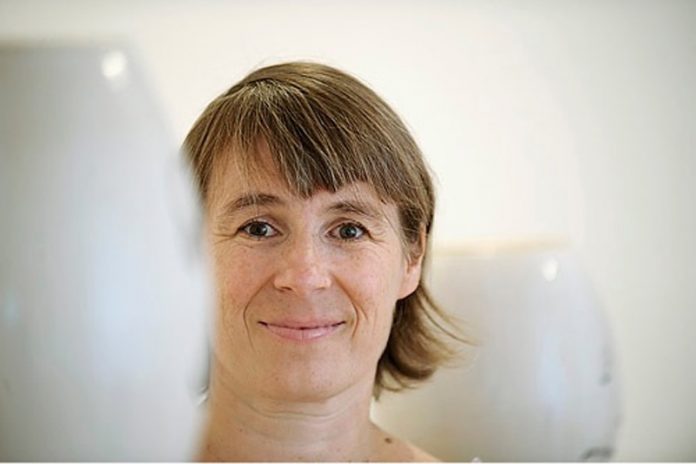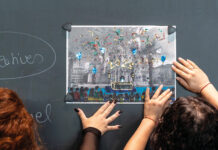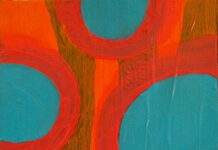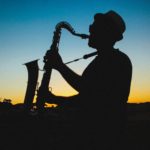
To every art its freedom: creative adjustment or the resistance of the aesthetic
— Eva Maria Stadler
What constitutes the “art of freedom”? In order to understand our own actions in a social and increasingly globalised context, we need a culture in which education, knowledge, thought and critical skills again become a political category. Here, art plays a decisive role, since it has the capacity for connecting sensual perception and experience with rationality, cognitive thought and criticism in their opposition to each other.
The golden lettering on the Vienna Secession, the gleaming white building designed by Joseph Maria Olbrich, portrays the slogan of the 20th century: To every age its art, to every art its freedom. The text, which was formulated with a certain amount of pathos by Ludwig Hevesi, became the programme for art of the modern age. Art should be free, free of political appropriation and representation. The freedom of art continues to be put to the test, even if it is possible in some cultural circles to at least agree that freedom is an inherent right. Currently, the abandonment of a qualitative understanding of freedom is certainly a cause for concern. However, appropriation and the transformation of aesthetic freedom by liberalist concepts are also a focus for criticism. Here, a key contributing factor is a misunderstanding of the term “creativity”.
Creatio ex nihilo is the magic formula invoked by all those for whom creativity promises the prospect of participation in the creative process. Creation from nothing – the phrase sounds sweet and alluring. Nothing appears to be needed in advance; no material, no skill, merely the will to create. It is hardly surprising that in a world in which boundless growth has become an ideology, the promised land is indeed increasingly becoming obligatory, since it is driven by the hope or speculation that capital can be made from it. But what is its price?
The avant garde function of art, which was attributed to it at the beginning of the 20th century, and its forward-looking perspective, became its precondition, and thus also its limitation. After all, progression, the future, linearity and the belief in the new ultimately create a uni-dimensional foil against the background of which expectations of art are developed. The liberation from totalitarian regimes that was supported by the avant garde, the attainment of freedom in art and thought, is put at risk when it allows itself to be appropriated by the logic of usability in its desire to create the new. The term freedom has come to be associated with liberty. While freedom can be understood as being the emancipation from hegemonial conditions, liberty refers to the freedom to act, to do whatever the moment permits. Art has its part to play in this development, since it is of key importance in bringing the individual to light. The aesthetic sensibility of the subject, which has been formed in tandem with the political and social upheavals of the French Revolution, the romanticised notion of the return to oneself as an individual and the value of self-determination, autonomy and independence, have all contributed to the continuing empowerment and fragility of the individual. The crisis, the tenuous high point when the opportunity must be seized, can be seen as an expression of this fragility. Its dynamic, its steep upward and downward trajectories, set the tempo.
Democratic processes are caught up in the undertow of curves, eruptions and cycles in the system of share indices coordinates, and in so doing lose their power of creation. The legitimisation of political power is increasingly being explained through the acceptance of economic necessities, which according to Jaques Rancière is a self-abnegation of power. To describe this equation of democracy with the dynamics of the economy, Rancière coined the term “post-democracy”. He talks of post-democracies as ideological formations which delegate the striving for freedom and self-realisation to the individual. Individual responsibility, rather than social responsibility, is advocated. Eve Chiapello and Luc Boltanski refer in this context to the model function of artists for an ideology that idealises individualisation, mobility and flexibility, turning them into the normative role model. The desire for self-determination and independence appears to counterbalance fragile living conditions, but moreover, these conditions appear to also produce it. According to Juliane Rebentisch in her study “Die Kunst der Freiheit” (“The art of freedom”), with a view to the “model of freedom of post-democracy, the ideal self of creative self-realisation must be returned to a social context and be recognised in its ideological function”¹.
In order to understand our own actions in a social and increasingly globalised context, we need a culture in which education, knowledge, thought and critical skills again become a political category. And this not only with the aim of being armed against the dictate of the economy, but in order to be able to negotiate social contexts. Here, art plays a decisive role. It is able to connect sensual perception and experience with rationality, cognitive thinking and criticism in their opposition to each other. The ability to think in a sensory way, to ask questions, to take a step back, should be schooled and made part of our culture. To an excessive degree, these areas are assigned to a supposed elite, which is in a position to amass education and culture in the capitalist sense. And in reality, knowledge is accumulated in our education system, but seldom digested. The fact that access to education is regulated primarily through the ability to accumulate knowledge appears to be particularly questionable. The thirst for the novel, like the thirst for knowledge, is an important productive factor, but should not an educated society have more than just a pile of knowledge? Even the development of skills currently being discussed appears inadequate here, since the key factor is the way in which knowledge is handled, together with the use of those skills that can have a formative effect.
Currently, we are unfortunately again seeing knowledge as a being classified as a threat from established power relationships, and as a result, the opponents of education are allying themselves with those for whom access to education capitalism is denied. Resistance against developments such as these consists simply of formulating questions or thoughts that make it possible to conceive of alternatives, open spaces and counter-models that take into account not only the wellbeing of the individual, but also that of a community.
Networks, cooperation and participation are the keywords that result from the diagnosis of the individualisation of the subject. Their potential, but also their weaknesses, should be taken into consideration. All too quickly, these strategies of communality have been, and continue to be, appropriated in order to avoid endangering the political retention of power. Thus, the architect Markus Miessen argues that participation “has become radical chic and a fashion item among politicians who wnat to ensure that the tool itself produces no critical content, but instead becomes something that demonstrates criticality.”² Attempts to also use art for such a form of fauxcriticality are also the order of the day. Art is popularly degraded to the role of representative of the resistance, to a simulation of freedom and social participation. Miessen describes this form of participation as a buoyancy aid and social sedative, whereby the ground has been cut from under people’s feet from which they “could have actively criticised the actions of the decision-makers and people’s representatives”. On the pretext of a phenomenal promise of freedom, resistance and criticism are being muzzled. Art and politics are needed in equal measure to give a form to freedom, and to prevent it from being mired in a swamp of rights and the entitlement to them.
The author
Eva Maria Stadler is Professor of Art and Knowledge Transfer at the University of Applied Arts in Vienna, and a curator for contemporary art. She has taught at the Academy of Fine Arts in Munich and Vienna, and at the State Academy of Fine Arts in Stuttgart. From 2012-2013, she was head of the Galerie der Stadt Schwaz. From 1994-2005, she was Director of the Grazer Kunstverein, from 2006-2007 curator in residence at the Academy of Fine Arts in Vienna, and from 2007-2011 curator for contemporary art at the Belvedere in Vienna. Eva Maria Stadler lives in Munich and Vienna.
1 Juliane Rebentisch: Die Kunst der Freiheit, Zur Dialektik demokratischer Existenz. Berlin: suhrkamp taschenbuch wissenschaft 2012, S. 374. 2 Markus Miessen: Albtraum Partizipation. Berlin: Merve Verlag 2012, S. 39.











